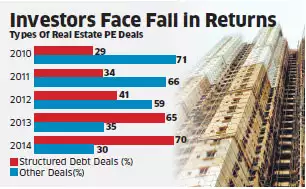-
Business Consulting
Our business consulting specialists offer a comprehensive blend of strategic advisory services. We assess the business, industry, operating model, synergy, skill sets and vision of the organisation and recommend the way forward
-
Digital Natives
Unlock growth with Grant Thornton Bharat's Digital Natives solutions. Customised support for tech-driven companies in healthcare, gaming, and more.
-
Digital Transformation Services
Grant Thornton’s digital transformation services help traditional businesses digitalise their business models with cloud technology, IoT consulting, app development and more DigiTech solutions.
-
Finance Transformation
Using a holistic approach, integrating digitalisation and digital transformation we help clients achieve transparency, control, governance, and faster decision making through real-time data within the business.
-
Human Capital Consulting
Our Human Capital Consulting team harnesses technology and industry expertise to assist in constructing adaptable organisations with transparency, fostering productive and value-driven workforces, and inspiring employees to engage meaningfully in their tasks.
-
Production Linked Incentive Scheme
Production-linked Incentive Scheme by the Indian government is aimed at boosting manufacturing. Grant Thornton Bharat offers varied services across sectors to help businesses avail of this scheme.
-
Public Sector Advisory
Our Public Sector Advisory team has focused streams, aligned with the core priorities of the Government of India. We are responsible for providing innovative and customized technical and managerial solutions.
-
Tech Advisory
We have amalgamated Digital Transformation, IT Advisory & Information Management and Analytics into a new offering, DigiTech.

-
Direct Tax services
Our tax specialists offer a comprehensive blend of tax services, tax litigation, regulatory and compliance services, helping you navigate through complex business matters.
-
Indirect Tax Services
Get tax services by leading tax firm Grant Thornton India. Our indirect tax services include consulting, compliance and litigation services for corporate, international and transaction tax
-
Transfer pricing services
Our transfer pricing services experts provide a range of services from provision of APA services to handling large global assignments including Country by Country reporting.
-
US Tax
At Grant Thornton, we help individuals and dynamic companies deal with US tax laws, which are one of the most complicated tax legislations across the world.
-
Financial Services - Tax
Best financial advisory services, tailored for small and large businesses by the experts having comprehensive knowledge of domestic laws and access to multifaceted tools to provide a valuable results.
-
Financial Reporting consulting services
Our experts have significant hands-on experience in providing IFRS/US GAAP services, end-to-end solutions and support services to fulfil financial reporting requirements.
-
Fund accounting and financial reporting
International operations often lack standardisation and have varied local reporting formats and requirements. Our experts can offer proactive insights, practical guidance, and positive progress and help meet regulatory timeframes.
-
Compliance and Secretarial Services
Our experts can assist in overhauling the entire compliance machinery of the organisation through evaluation of the applicable statutory obligations, monitoring of adequate governance controls, reporting and providing ongoing support.
-
Global People Solutions
As businesses transcend borders, both domestic and global considerations need equal attention. Our interim CFO and financial controller support services help organisations meet the business vision.
-
Finance and accounting outsourcing
Our accounting experts assist organisations in managing their accounting and reporting. Our dedicated Integrated Knowledge and Capability Centre (IKCC), allows us to service both the domestic and global markets efficiently and cost-effectively
-
Compliance Management System
We have automation solutions for you that will allow meeting government requirements and remain diligent, which when failed, can lead to penalties and loss in revenue.
-
Global compliance and reporting solutions
At Grant Thornton Bharat, we meet the challenges of our clients and help them unlock their potential for growth. Our professionals offer solutions tailored to meet our clients’ global accounting and statutory reporting requirements. With first-hand experience of local reporting requirements in more than 145+ locations worldwide, we provide seamless and consistent international service delivery through a single point of contact.
-
Related-party transaction governance
Related-party transactions (RPTs) are common in business structures where organisations engage with their group entities, such as holding companies, subsidiaries, associate concerns, joint ventures, or key management personnel, for various operational or financial purposes.
-
Family Offices & Private Client Services
Grant Thornton Bharat Private Client Services offers tailored advisory for family-owned businesses, focusing on governance, compliance, tax, succession planning, and family office structuring to sustain wealth and preserve legacies across generations.
-
GTMitra: Tax & Regulatory Tool
GTMitra, a specialised tax and regulatory tool by Grant Thornton Bharat, supports multinational businesses in understanding laws and regulations for effective growth strategies.
-
Labour codes
Labour codes solutions help you transition through the new legislation. At Grant Thornton, we help businesses divide their approach to make sure a smooth transition.
-
Alerts
At Grant Thornton India, with the help of our tax alerts, we help to provide updates on how to minimise your tax exposure and risks.
-
Unlocking opportunities: India investment roadmap
The India Investment Roadmap resource is designed to navigate the complexities of Indian tax and regulatory laws, providing seamless guidance and a comprehensive set of solutions to ensure a smooth process for investors aiming to establish or expand their presence in India.
-
CFO Solutions
Our comprehensive suite of solutions for CFOs

-
Cyber
In today’s time, businesses have gone through large transformation initiatives such as adoption of digital technologies, transition to cloud, use of advanced technologies et al.
-
Risk Optimisation
Our Governance, Risk and Operations (GRO) services encompass Internal Audit, Enterprise Risk Management, Internal Financial Controls, IT advisory, Standard Operating Procedures and other services.
-
Risk analytics
Grant Thornton Bharat’s CLEARR Insights is a state-of-the art data analytics platform that will help you in seamless data analysis and efficient decision-making.
-
Forensic & Investigation Services
The team of forensic advisory services experts consists of the best intelligence corporate experts, and fraud risk, computer forensic experts to deliver most effective solutions to dynamic Indian businesses.
-
Digital Forensics and Incident Response (DFIR)
Strengthen cyber resilience with proactive forensic audits
-
ESG consulting
Grant Thornton Bharat offers holistic ESG consulting solutions for sustainable business outcomes. With industry expertise and AI technology, we drive long-term value.

-
Transaction Tax Services
Our transaction tax experts understand your business, anticipate your needs and come up with robust tax solutions that help you achieve business objectives ensuring compliance and efficiency
-
Deal Advisory
Unlike other M&A advisory firm in India, we offer deal advisory services and work exclusively with controlled and well-designed strategies to help businesses grow, expand and create value.
-
Due Diligence
Grant Thornton’s financial due diligence services are aimed at corporate looking for mergers and acquisitions, private equity firms evaluating investments and businesses/promoters considering sale/divestment.
-
Valuations
As one of the leading valuation consultants in India, Grant Thornton specializes in all the aspects of the process like business valuation services, financial reporting, tax issues, etc.
-
Overseas Listing
Overseas listing presents a perfect platform for mid-sized Indian companies with global ambitions. Grant Thornton’s team of experts in listings, work closely with clients during all stages.
-
Debt & Special Situations Solutions
Grant Thornton Bharat offers specialist debt and special situations consulting services, including restructuring, insolvency, and asset tracing solutions.
-
Financial Reporting Advisory Services
Grant Thornton Bharat Financial Reporting Advisory Services offer end-to-end solutions for complex financial requirements, including GAAP conversions, IPO support, and hedge accounting advisory, ensuring accurate financial reporting and compliance.
-
Financial Statement Audit and Attestation Services
Grant Thornton Bharat offers customised financial statement audit and attestation services, ensuring impeccable quality and compliance with global standards. Our partner-led approach, technical expertise, and market credibility ensure effective solutions for your business needs.

- Agriculture
- Asset management
- Automotive and EV
- Aviation
- Banking
- Education and ed-tech
- Energy & Renewables
- Engineering & industrial products
- Fintech
- FMCG & consumer goods
- Food processing
- Gaming
- Healthcare
- Urban infrastructure
- Insurance
- Media
- Medical devices
- Metals & Mining
- NBFC
- Pharma, bio tech & life sciences
- Real estate and REITs
- Retail & E-commerce
- Specialty chemicals
- Sports
- Technology
- Telecom
- Transportation & logistics
- Tourism & hospitality
-
 Thought leadership Co-lending in India: Expanding credit access for MSMEsIn today’s rapidly evolving financial landscape, co-lending has emerged as a key enabler of credit expansion in India, facilitating partnerships between banks and non-banking financial companies (NBFCs) to extend credit more efficiently to underserved segments.
Thought leadership Co-lending in India: Expanding credit access for MSMEsIn today’s rapidly evolving financial landscape, co-lending has emerged as a key enabler of credit expansion in India, facilitating partnerships between banks and non-banking financial companies (NBFCs) to extend credit more efficiently to underserved segments. -
 Article Why India’s financial inclusion journey needs to focus on equity and access to creditFinancial services have expanded over a decade, giving millions access to bank accounts and digital payments. But true empowerment needs to reach every corner of the country if growth is to be long-term and sustained
Article Why India’s financial inclusion journey needs to focus on equity and access to creditFinancial services have expanded over a decade, giving millions access to bank accounts and digital payments. But true empowerment needs to reach every corner of the country if growth is to be long-term and sustained -
 Thought Leadership Competitive and sustainable agriculture & food processing in KeralaThe economy of Kerala is primarily driven by the services sector, which contributes 66% to the Gross State Domestic Product (GSDP).
Thought Leadership Competitive and sustainable agriculture & food processing in KeralaThe economy of Kerala is primarily driven by the services sector, which contributes 66% to the Gross State Domestic Product (GSDP). -
 Article Economic Survey 2024-25: Deregulation, investment and innovation for a Viksit BharatIndia's economic growth remains for a steady trajectory with real GDP expected to grow at 6.4% in FY25 and in the range of 6.3%-6.8% in FY26, reflecting resilience despite global uncertainties.
Article Economic Survey 2024-25: Deregulation, investment and innovation for a Viksit BharatIndia's economic growth remains for a steady trajectory with real GDP expected to grow at 6.4% in FY25 and in the range of 6.3%-6.8% in FY26, reflecting resilience despite global uncertainties.
-
India-UK
India-UK
It’s a wager gone terribly wrong. Rich savvy investors, who invested in real estate debt funds expecting higher yields and capital protection, are spending sleepless nights as they have not been receiving regular interest payments over the past year. Some of these investments may go down the sewer unless there is an immediate uptick in property sales and a resultant revival in the real estate sector, wealth managers and analysts opine.
Ballpark estimates suggest that almost half of the 50-odd real estate funds – which provide mezzanine funding to developers – have turned irregular in their interest payments, which on a normal course are paid every quarter or in two instalments every year.
“Some of the NCD issuers – and real estate funds that have invested in NCDs – are seeing delays in interest payments and probable defaults,” said Prateek Pant, executive director – products & services, RBS Private Banking.
“There’s clearly a lot of liquidity stress in the real estate market. HNIs who have direct investments in NCDs are now grappling with irregular interest payments,” Pan added.
Payment delays apart, several funds have also marked down coupon rates and extended principal repayment schedules by almost 12 to 24 months. Most funds have a one-year moratorium immediately after the launch, during which period it is not obliged to make any pay-backs. From the second year onwards, funds start repaying interests every quarter, along with some principal amount. As the years progress, the portion of principal repayment goes up.

“A handful of debt oriented RE funds has also faced delayed payments from builders and exits have been slower than estimated impacting investor returns,” said Sriram Iyer, CEO of Religare Wealth Management.
“While all of this lending is backed by collateral in the form of land or building and in some cases, personal guarantees, funds have not resorted to liquidation of collateral which in itself may not be an easy option to exercise,” Iyer added.
It’s not only small funds, but a few from larger pools — managed by the likes of HDFC, Birla Sunlife, JM, ICICI Pru, Kotak, IIFL, Edelweiss, Indiabulls, DHFL, ASK Group and Edelweiss — have also tweaked payment schedules, sources said.
“The smaller funds – with asset exposure in the range of Rs 50 – 100 crore – are staring at payout stress,” said Shouvik Purkayastha, MD – capital markets group, Cushman & Wakefield. “Some have frozen their coupons because of low cash-flows. But unless there’s an actual default, there’s good probability of money coming back to investors, albeit a bit delayed and a bit lower returns than promised by these funds,” Purkayastha added.
Real estate funds moved on from being pure equity play (where they participated in projects) to mezzanine debt funding a few years ago as yields hovered between 18 and 24 per cent per annum. To secure their money, funds gathered 2 – 4 times collateral and tagged along ‘desra’ clauses which took care of immediate payout to investors. Long term payouts, however, are dependent on developer cash flows.
India’s real estate sector has been witnessing weakness in sales momentum, rising inventory and debt levels for the past three years. As per the latest data, unsold housing stock across top eight property markets in the country rose 18 per cent to over 1.1 billion sq ft as on June 30. Barring Hyderabad, all other cities have shown a rise in the unsold inventory, with Bengaluru showing maximum increase of 55 per cent compared to a year ago.
Though the growth in unsold stock in the National Capital Region has been just 7 per cent, the region tops the chart with 326 million sq ft, followed by Mumbai Metropolitan Region at 201 million sq ft. Last month, Moody’s Investors Service said that India’s bigger property developers will continue to face a challenging operating environment including weak cash flows, flat sales and stagnant prices over the next one year.
“The whole concept of structured debt, even though it offers some protection, is not as secured as bank funding,” said Sumeet Abrol, Partner, Grant Thornton India, adding, “these are debt-like products; but not as secured as classic debt. The whole pay-out in structured debt funding is dependent on cash-flows of the project.”
According to analysts, funds deployed between 2010 and 2012 are phasing through a lot of stress. Project cash-flows have also declined significantly as there’s limited consumer interest at the aggregate industry level, analysts opine.
“While commercial real estate is showing some improvement mainly because of low supply, residential property sales velocity has fallen sharply. This is impacting payouts of most mezzanine funds,” Abrol added.
It’s not only real estate debt funds, but also rental yield funds that are facing sectoral headwinds. Tepid demand for commercial real estate has flattened rental yields; several funds operating in this space have not exercised escalation clauses which allow them to charge a higher rent after a specific time-period. Rental yield funds are returning 7 – 9 per cent PA – about 11 – 13 per cent lower than the promised yields.
“Overall performance of rental yield funds has been sub-par,” said Atul Singh, MD & CEO, India of Julius Baer. But rather than reducing prices outright to drive sales volumes, developers are modifying products configuration and offering incentives to prop up sales momentum.
This article appeared in The Economic Times on 20th October, 2015.
